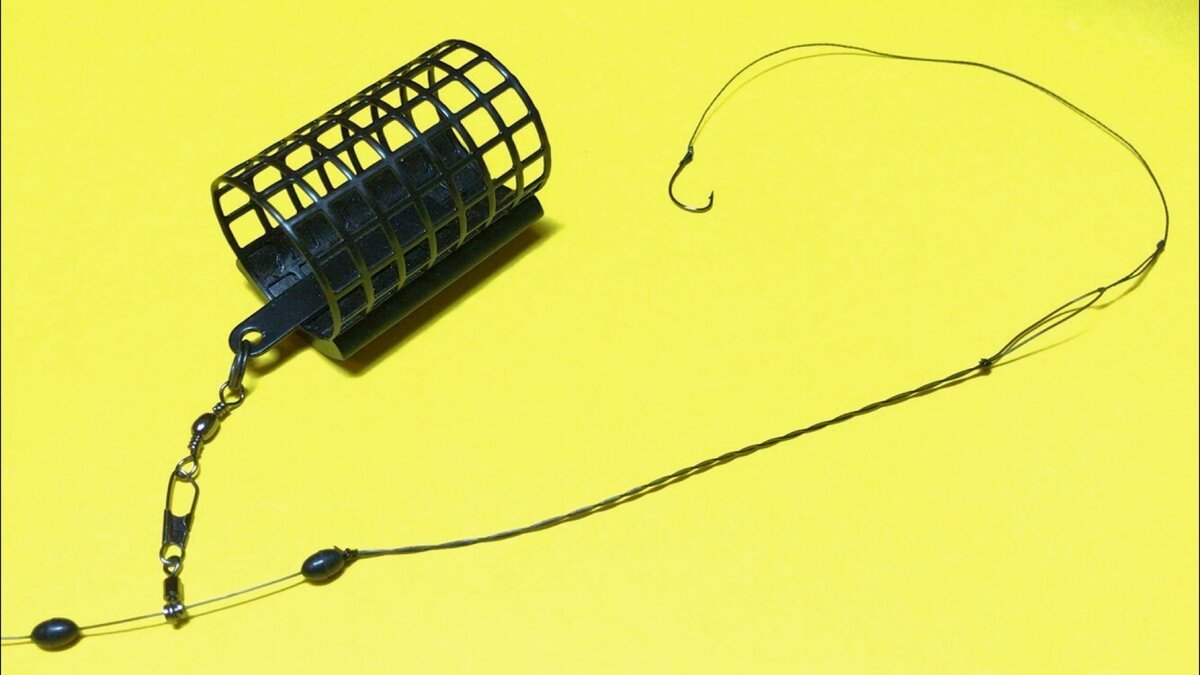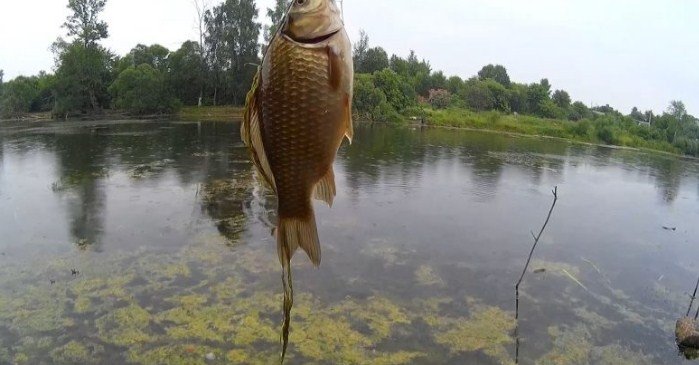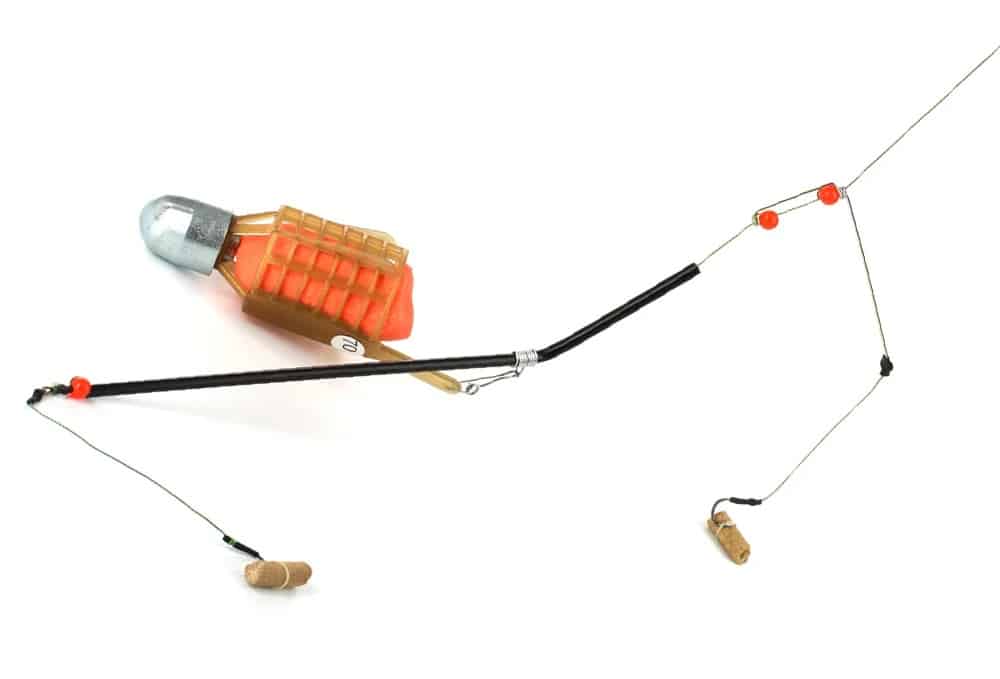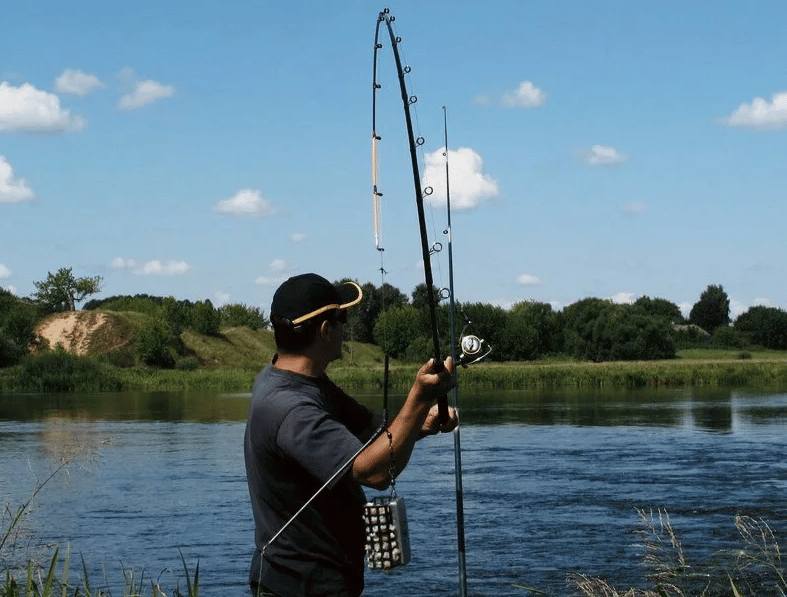In-line mounting first appeared in sport fishing. Inline installation is the safest of feeder installations for fish, since the spring is not fixed tightly, but moves freely along the cord, and if it breaks, the carp can safely leave. Other types of rigs in this case can lead to the death of the fish.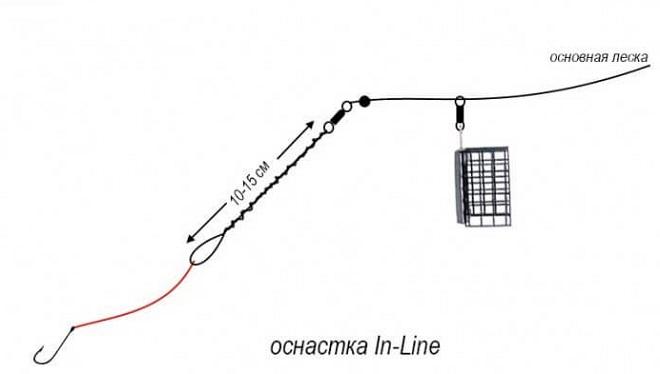
- Pros and cons of using inline in feeder fishing
- How inline editing works
- Free running of the rig
- Self-choke limitation
- What is required for inline editing
- Varieties of in-line montages
- Monofilament line as a base
- Rigging with bend
- Equipment for the flat method
- Carp mounting
- Feedergam in-line
- In-line on a cord with feedergam
- Features of use
- Поделиться ссылкой:
Pros and cons of using inline in feeder fishing
Inline feeder editing is the most sensitive, unlike the others, but it has certain disadvantages:
- sophisticated types of equipment will require time and skill when knitting;
- different elements are used that complicate the tackle – tubes, beads, stoppers, connectors;
- in some cases, the tackle gets confused when casting and does not work as it should;
- during the spring flail, the tackle completely breaks off.
Among the advantages, it should be noted:
- in-line – the main type of installation of tackle for a flat feeder ;
- can be used on various reservoirs, both with and without a current;
- excellent sensitivity that allows you to catch even small fish.
Attention: Installation in-line with a leadcore is considered the safest for carp, it is used in sports
carp fishing , when the caught fish needs to be released.
How inline editing works
The tackle inline for the feeder is done in different ways: the main thing to understand is that it provides completely free movement and restriction for self-landing.
Free running of the rig
The reason for this slide is that the pecked fish can exhaust the mono line until the slack in the friction brake is reached. During fishing on the feeder, the reel is constantly fixed, so the fish, when the resistance of the tackle is reached, will feel it and spit out the nozzle. At the same time, self-locking does not occur often. This method of installation is best used for competitions, since it is necessary to monitor the bite all the time and hook the fish in a timely manner. The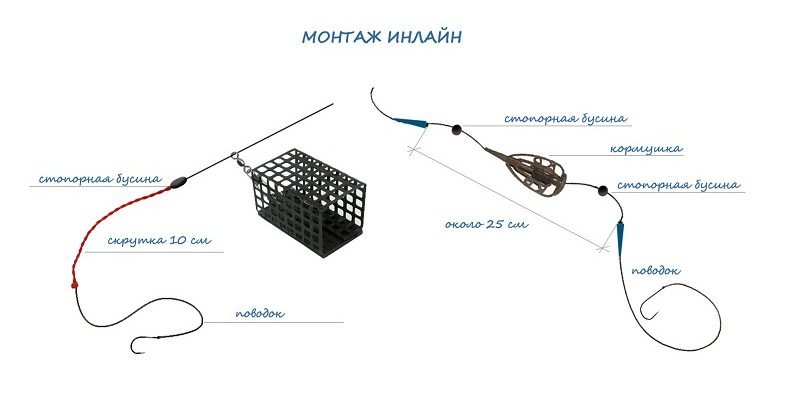
Self-choke limitation
Beginners generally restrict mounting to only the top stopper, as this is much more convenient. If you need to distract yourself, then during the bite, the fish will exhaust the line to the stop. After it self-snaps or spits out the nozzle. This is a definite safety of the fishing rod, since the trophy fish can easily drag it into the pond. The principle of operation of the tackle will depend on the distance between the stopper and the spring. This inline feeder cut is versatile:
- if the stopper moves upward by 25 cm, then the in-line will act as an asymmetrical loop , since the free movement of the fishing line occurs at a certain distance;
- if you move the stopper closer to the spring, you can get a blind rigging paternoster .
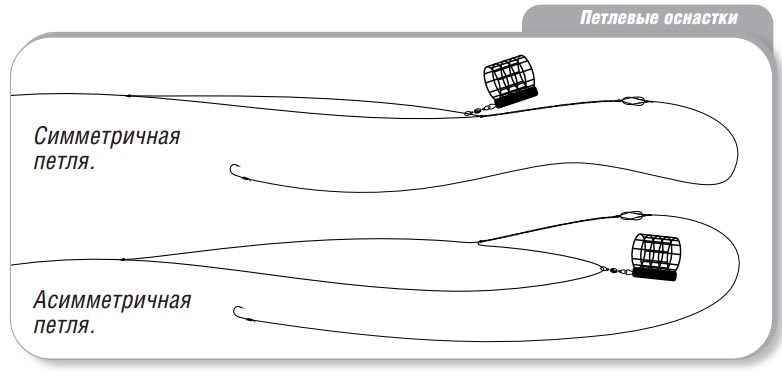
What is required for inline editing
Nowadays, many different components are manufactured for fishing with feeder tackle. For in-line you will need the following consumables:
- carbines;
- anti-twist;
- fishing line / cord;
- spring;
- stoppers;
- swivels.
Inline feeder rig is not difficult to manufacture and is mainly used for catching trophy specimens. Together with it, the “method” feeder is often used. First, a swivel and a spring are attached to the fishing line – they must be located between the beads.
it prevents the leash and feeder from overlapping… 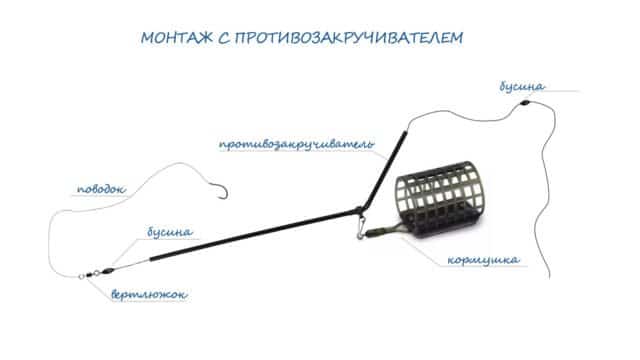
for the feeder with anti-twist is good for the flow [/ caption]
Varieties of in-line montages
Inline feeder equipment is not a specific installation option, but a different way of fixing the feeder in a sliding variation. By in-line some anglers often refer to the running feeder method, but there are other ways of rigging.
Monofilament line as a base
Inline mounting for the feeder on the line is knitted on the monofilament itself, which is wound on a reel. The end of the monofilament is carried out through a carabiner ring with a strong latch, where the feeder is attached. Then a stopper is put on, this will give her the opportunity to move freely. The bead does not allow the swivel to hook the lead with the lead. The
Rigging with bend
If you correctly make a feeder installation inline with a branch under the feeder, then first a spring is lowered to the bottom, and then, with a certain delay, a hook with a nozzle. This tackle is convenient to use if you need to catch on the fall. Inline with a branch under the feeder is great for catching
roach , brood bream, silver bream,
chub . To assemble the rig, you first need to prepare a branch for the feeder:
- Since it must be at least 8 cm in length, a bead with a large hole is required to fit the fishing line folded in half.
- A piece of fishing line with a cross section of 0.30 mm and a length of about 25 cm is inserted into the bead.
- The monofil must be folded in half so that the bead is centered.
- After that, both edges are clamped with hands, and twisting is performed.
- A twist of about 20 cm is required. Then a crimping tube is put on the fishing line and moved to a distance of 5 cm from the bead, and after that the monofile is pulled through the carabiner.
- The rest of the laid line is passed into the tube so that a small loop comes out. Then she moves to the swivel and is clamped.
- The antennae are cut off – and the branch for the feeder comes out.
- Next, the bead is threaded through the main line, and a small stopper is installed behind it. After the in-line it is knitted in the above-described way, only the branch must be made 20 cm longer – 35 cm recede from the end of the fishing line, laid in half, knit a knot. This will create a loop. Then twisting is performed, fixed with a knot, and the excess is cut off.
Inline Feeder Editing with Running Feeder Rig: https://youtu.be/sNHoJD3Axqw
Equipment for the flat method
This tackle is used for fishing, both in small streams and on ponds with a muddy bottom, since the trough has a flat and wide weighted base. Due to this, it does not deepen, unlike other springs. To do this in-line feeder assembly, you need a piece of line approximately 60 cm with a cross section of 0.38 mm. One end of the monofilament is tied to the swivel, where the leash with the hook will then be. After that, a bead is drawn through the fishing line and pulled up to the swivel – the bead itself must be slightly larger than the inner tube of the feeder. The fishing line is drawn into the spring hole, from the top of which you need to retreat 50 cm and make a loop – the main fishing line will be attached here. When using this rig, the size of the leash is approximately 20 cm. [Caption id = “attachment_6077” align = “aligncenter”width = “600”]
Carp mounting
To make an inline tackle for carp fishing, you need to attach a swivel to the fishing line, and then install a blind rubber stopper. Care must be taken not to deform the knot where the swivel is located. Then the line must be threaded into the hole in the “method” feeder, measure 20 cm and make a loop to fix it to the main line. The leash is knitted from monofilament or leash material for carp. It is this part of the rig that is most exposed to abrasion during fishing. The fish often goes into driftwood, it can cut the line against the shellfish, because the tackle leash must withstand all this. The leash is about 15 cm.
Feedergam in-line
If you use a cord as the main line, then the rig will come out very tough, since the braid almost does not stretch. If a fisherman installs thin leashes, then there is a huge probability of their breakage when fishing for a trophy specimen. This is avoided by feeder rubber. There are the following ways to use Feedergam:
- a long piece instead of twisting;
- a small insert between the cord and the leash material – on the anti-twist;
- flat feeders with built-in shock absorber;
- rigid feedergam, along which the feeder moves – as an extension of the main line.
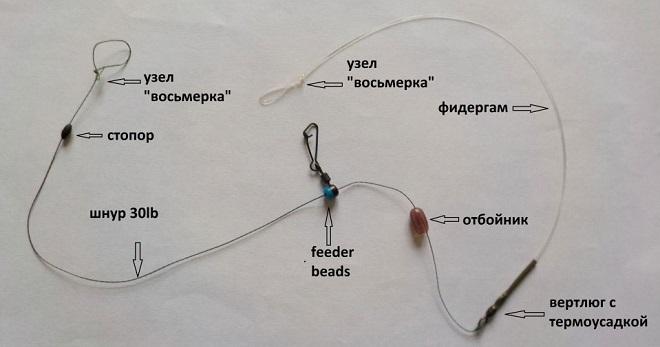
In-line on a cord with feedergam
To fix the rubber, a loop of about 20 cm is knitted on the cord with the help of a knot. A loop of the elastic is attached to it with the help of a hole in the bead. This shock absorber helps to damp fish jerks on the braid. After that, a swivel with a carabiner for attaching the spring is put on the cord. The bead is installed on one of the loops of the rubber bend, the length of which is made such that the loop for the leash is located 17 cm below the trough.
Features of use
During the use of in-line, it is necessary to carry out experiments all the time until it is possible to choose the appropriate option for the specific fishing conditions. It is advised to change the numbers of hooks, the length of the leashes, the limits of the free movement of the feeder. These manipulations are part of the feeder fishing technique. How to fish inline, see the video: https://youtu.be/DWEb3gRcz2k The effectiveness of this rig in a strong current and in a calm reservoir is exactly the same. In the latter case, small leashes are used, since the hook must be located near the feeder. In the presence of a current, it is better to knit long leashes, as they are straightened by the flow to the cloud from the bait.
